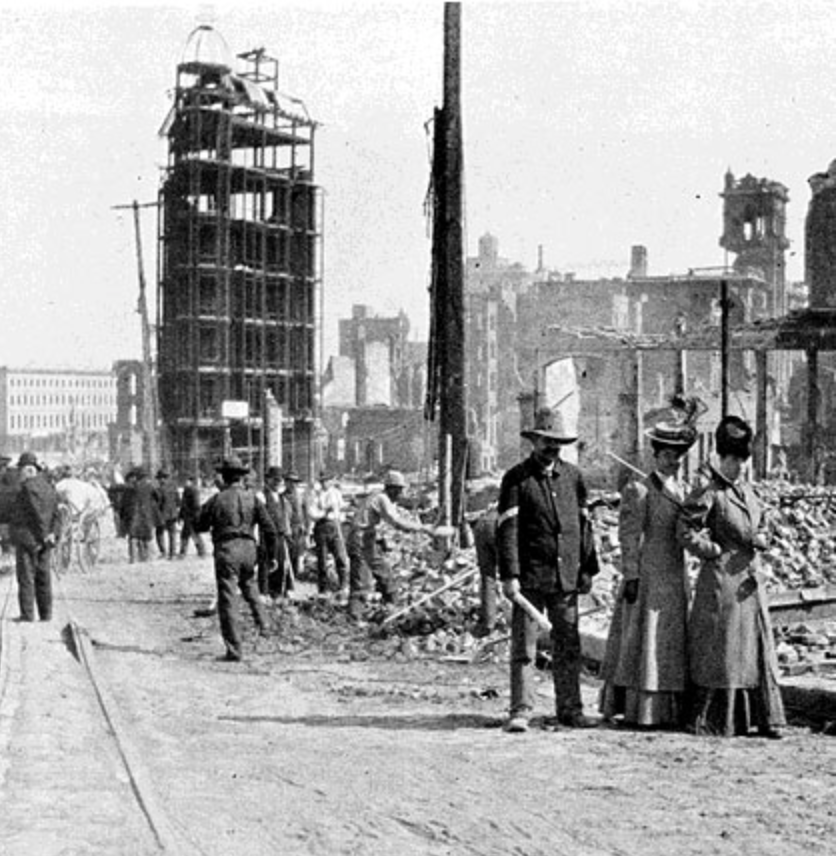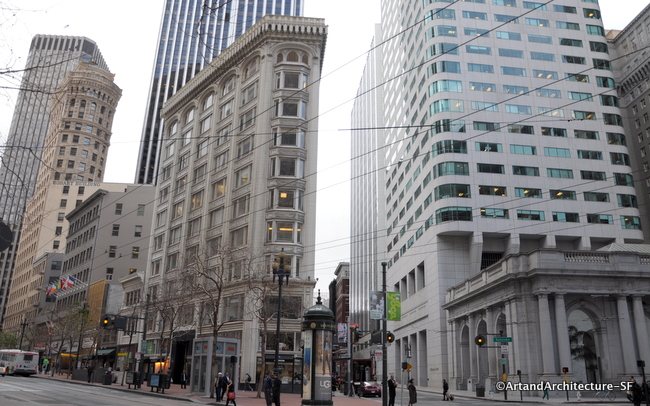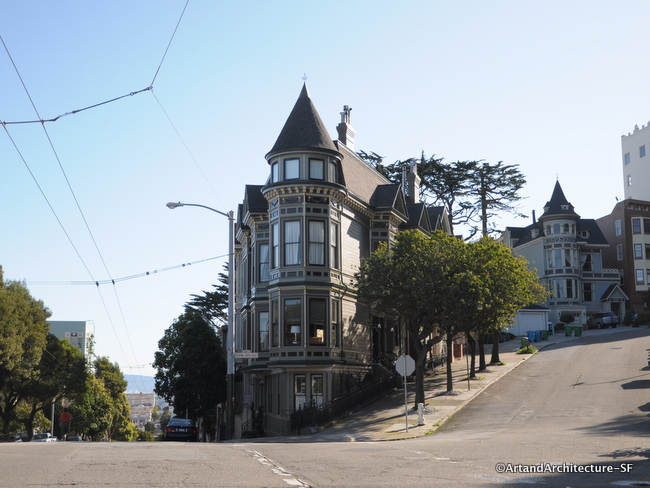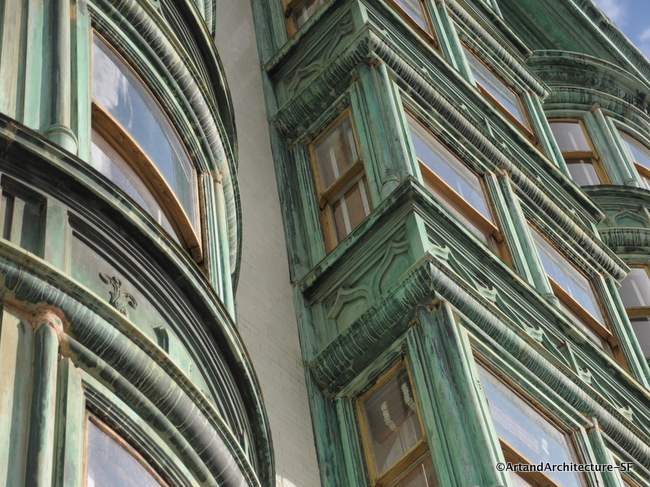916 Geary
North Beach
 The Sentinel Building, also known as Columbus Tower, sits at the corners of Columbus Avenue, Kearny Street and Jackson Street.
The Sentinel Building, also known as Columbus Tower, sits at the corners of Columbus Avenue, Kearny Street and Jackson Street.
The building is a classic Beaux-Arts flatiron. Flatiron buildings were structures built primarily between 1880 and 1926. Most flatirons were built in either the Beaux-Arts or Renaissance Revival architectural style that was popular at the time. These types of buildings are called flatirons because they are shaped like a flat clothes iron. This design is necessary for the trapezoid or triangular-shaped lots that are commonly found in 19th-and-20th century city grids. These odd-shaped lots appeared when the grids incorporated diagonal streets such as Columbus and Market Streets in San Francisco.
Flatirons were some of the first skyscrapers to use steel frames over reinforced concrete. They employed an efficient use of what was often considered an unbuildable lot. At the same time, they added architectural interest to the neighborhood.
San Francisco is the home to several flatiron buildings. The most recognizable is the Sentinel, designed by Salfield and Kohlberg and clad in white tile and copper. Construction on the Sentinel was begun before the 1906 earthquake and fire. The framing survived the disaster, and the building was completed in 1907.
The building has eight floors above ground, and houses an expansive basement. The top floor initially housed the real estate offices of its owner, the notorious Abe Ruef. Ruef was a local political figure who spent time in San Quentin for bribery. Ceasar’s Grill, a hotspot during prohibition, occupied the basement; years later that spot was the home of the Hungry i.
 The Sentinel under construction after the 1906 Earthquake and Fire. Photo Credit: San Francisco Public Library
The Sentinel under construction after the 1906 Earthquake and Fire. Photo Credit: San Francisco Public Library
In 1958, Rob Moor, a Dutch-born businessman purchased the building as an investment, on the advice of his architect and friend Henrick Bull. San Francisco had not yet awoken to historic preservation, and the building was scheduled for demolition. With the guidance of Bull, Moor began to restore the building. He also renamed it Columbus Tower.
A short two years later, at a one and one-half times profit, Moor sold the building to the Kingston Trio. The Kingston Trio used the building for their corporate headquarters, and had a sound studio in the basement throughout the 1960s.
On June 13, 1970, the building was declared San Francisco Landmark #33 and renamed the Sentinel Building.
The Kingston Trio sold the building to Francis Ford Coppola in 1973 for $500,000. It has remained in the hands of Mr. Coppola as the headquarters for his corporation Zoetrope. Offices occupy the upper floors; there is a small screening room in the basement and a private apartment on the top floor. The ground floor houses Zoetrope Restaurant, featuring wines from the Coppola’s Napa Valley winery.
 A flatiron building at 540 Market Street
A flatiron building at 540 Market Street
 The only flatiron residential building in San Francisco, 1081 Haight Street
The only flatiron residential building in San Francisco, 1081 Haight Street

I love the Sentinel building – it’s a beauty for sure. We have a wonderful flatiron building downtown here but I have never taken a pic – will have to get there soon.
I love the uniqueness of the flatiron architecture. The city is fortunate to have several.
Great looking building. I love the details.
I bet I’ve been by this building dozens of times and in it more than once when it was the Hungry i, but never really looked at it. My misfortune. Fascinating story of its history including the Kingston Trio connection. Coppola was smart, smart, smart to buy this building at what must have seemed a huge sum at the time. And that was before he made his second fortune in the wine business! Thanks for this post.
[…] most well known Flatiron in San Francisco is most likely the The Sentinal in North Beach, but since this is actually called The Flatiron Building the two are often […]
[…] During the period of his trial, Rueff occupied offices in The Columbus Tower (now the Sentinel Building). In February 1907 Rueff pleaded “not guilty”. On March 18, 1907, the Supervisors […]